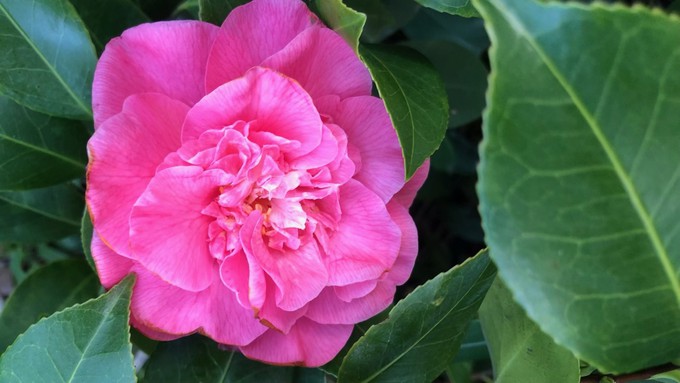
Forecast mixes breezy weather with frosty nights

Warmer weather will prompt camellias into bloom, but frost is still in the forecast. Kathy Morrison
Hang on to your gardening hat; we’re in for more breezy conditions. Keep those frost cloths handy, too – and an umbrella.
According to the National Weather Service, Sacramento can expect a mix of blustery and sometimes downright cold weather this week. Light, gusty winds will push storm clouds to the Sierra on Saturday and Sunday. More breezy weather arrives later in the week along with a chance of rain Thursday night and Friday morning. The weather service pegs our chance of rain at 30% with only a trace in the forecast (so far).
In between, we’re in for some very chilly nights with overnight lows in the 30s. Widespread frost – and a low of 31 – is forecast for early Thursday morning.
Otherwise, Sacramento’s forecast will be mostly on the cool side with mid 50s forecast Tuesday through Friday. The exception is Super Bowl Sunday with an anticipated high of 67 – just enough heat to tease camellias into bloom.
Although it may feel like spring on Sunday, remember we’re still getting cold at night; plan and plant accordingly.
* This is the last chance to spray fruit trees before they bloom. Treat peach and nectarine trees with copper-based fungicide. Spray apricot trees at bud swell to prevent brown rot. Apply horticultural oil to control scale, mites and aphids on fruit trees soon after a rain. But remember: Oils need at least 24 hours to dry to be effective. Don’t spray on this Thursday or Friday when rain is forecast.
* Feed spring-blooming shrubs and fall-planted perennials with slow-release fertilizer. Feed mature trees and shrubs after spring growth starts. Feed camellias after they bloom.
* Remove aphids from blooming bulbs with a strong spray of water or insecticidal soap.
* Fertilize strawberries and asparagus.
* Transplant or direct-seed several flowers, including snapdragon, candytuft, lilies, astilbe, larkspur, Shasta and painted daisies, stocks, bleeding heart and coral bells.
* In the vegetable garden, plant Jerusalem artichoke tubers, and strawberry and rhubarb roots.
* Transplant cabbage, broccoli, kale and Brussels sprouts as well as lettuce (both loose leaf and head).
* Indoors, start peppers, tomatoes and eggplant from seed.
* Plant artichokes, asparagus and horseradish from root divisions.
* Plant potatoes from tubers and onions from sets (small bulbs). The onions will sprout quickly and can be used as green onions in March.
* From seed, plant beets, chard, lettuce, mustard, peas, radishes and turnips.
* Set out flowering perennials such as columbine and delphinium.
* Plant summer-flowering bulbs including cannas, calla lilies and gladiolus.
Comments
0 comments have been posted.Sacramento Digs Gardening to your inbox.
Sites We Like
Garden Checklist for week of July 21
Your garden needs you!
* Keep your vegetable garden watered, mulched and weeded. Water before 8 a.m. to reduce the chance of fungal infection and to conserve moisture.
* Feed vegetable plants bone meal, rock phosphate or other fertilizers high in phosphate to stimulate more blooms and fruiting. (But wait until daily high temperatures drop out of the 100s.)
* Don’t let tomatoes wilt or dry out completely. Give tomatoes a deep watering two to three times a week.
* Harvest vegetables promptly to encourage plants to produce more. Squash especially tends to grow rapidly in hot weather. Keep an eye on zucchini.
* Pinch back chrysanthemums for bushy plants and more flowers in September.
* Remove spent flowers from roses, daylilies and other bloomers as they finish flowering.
* Pinch off blooms from basil so the plant will grow more leaves.
* Cut back lavender after flowering to promote a second bloom.
* It's not too late to add a splash of color. Plant petunias, snapdragons, zinnias and marigolds.
* From seed, plant corn, pumpkins, radishes, winter squash and sunflowers.